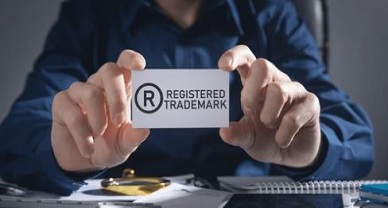Trademark Meaning and Procedure to Register
INTRODUCTION
A trademark can be registered for the purpose of securing diverse graphic and non-graphic unique symbols and indicia to distinguish the products or services of a trader from that of others. A large fields of things that can be registered as a trademark Traditional and Non Traditional Trademarks JM et al,2013 Trademarks can actually be anything from words, symbols, pictures but this has in recent years expanded to the non-traditional trademarks. This article discusses the domain of trademark registration, which is useful for businesses and individuals in order to protect their brand. Here are the main categories of elements that can be registered as trademarks:
1. Words and Phrases
Far and wide, words and phrases also rank as the dominant kind of trademark nowadays. These brand names, slogans, and taglines can be considered as some of the content that can be used on the different platforms. For instance, “Coca-Cola” is trademark that has been reclaimed yet “Just Do It” is a brand mark. For the word or phrase to be registered, it must be capable of being differentiated from other word(s) within the relevant classes, thus cannot be descriptive or generic. Descriptive marks may sometimes be protected, in case they have become distinctive as a result of repeated use and being recognized in the market by consumers.
2. Logos and Symbols
Logo and symbols are part of the graphics, and when used, they represent trademark. First of all, these visual marks must be distinctive: they must be easily recognizable by consumers, and must not be confused with any other marks on the market. An example is the famous Apple company symbol which is a copyright to an Apple fruit that has a bite taken off from it. Logo designs can be of just graphics or include the text or both graphics as well as text. The core condition under the use of these marks is that they should be able to indicate the origin of the goods or services.
3. Designs and Shapes
Any recommended design that has a recognizable character and is not linked to the object’s functionality or purpose may be trademarked. This refers to the shape of packaging and or the physical shape and form of the product, where this forms part of identification of the source. For instance, the shape of the Coca-Cola bottle is one that’ll instantly bring the brand to mind whenever seen this has trademark features. However, they cannot be functional; functional aspects are already protected under patent law.
4. Colors
Some of the Prohibited Features of Trade Marks are: Any shape, style, colour or combination of colours can provided they have become distinctive and are directly associated to a particular trade mark. For instance, the particular kind of brown color that UPS utilizes for its trucks and employee’s wears is actually a brand name. Single colors are difficult to re-establishment; therefore they need to prove that they have been acknowledged as representational of the brand.
5. Sounds
Sounds can also be protected in the form of trademarks but only if they are different from those already in existence. These sound marks are normally found in the commercial and identity marketing. NBC chimes are three musical notes trumpet sound mark is one of the most widely recognized examples of sound trademarks. It should be distinguishable and effectively act as a Branding Sound that can establish specific products or services.
6. Scents
Scent marketing can be protected by law if they are for non-use and have unique features not relating to product usability. For instance, a particular smell associated with a product that is not a natural characteristic of the product is another good that can be patented. An example of endorsed properties is the smell of Play-Doh that has been protected by trademark by Hasbro. Like any other non-signifier mark, the scent must be distinctive and identifiable as the brands’ symbol.

7. Trade Dress
Trade dress is another form of the trademark that is an exclusive propriety unique shape, color, or package designation of a product or a product’s image that may not refer to the utilitarian aspect of the product. This can involve the choice of material, color or pattern, including even the design layout of a product or a shopping center. For instance, the uniqueness of furniture, color and style, and spatial division in an operational chain restaurant can be protected through trade dress. The principal requisition is that the trade dress should be inherently distinctive or, has carved a distinguishing image out of its usage.
The objects that can be registered as protective marks are extensive and include word and phrases; logos; designs; shapes; colors; protected arrangements and sounds; scents as well as trade dress. Which all of them must be, recognizable and proof, playing the role of the distinguishing signs of one party’s goods or services in relation to another’s. Trademarks of these components brand different commodities and service through registration and help businesses to avoid client confusion which lead to the formation of more identifiable brands in the market.
TRADEMARK REGISTRATION PROCESS
Trademark application goes through a few procedures to determine if the mark is qualified for protection and if it does not conflict with recognized trademarks. Although there are minor differences between one state and another, this process is usually the following steps. Here’s a detailed overview of the trademark registration process:
Preliminary Steps
Conduct a Trademark Search
First of all, one needs to perform a trademark search when intending to register a trademark. It assists to establish if a similar or a same mark is already in use or registered throughout this search. This can be achieved through some databases that are offered by the appropriate trademark office such as United States of America Patent and Trademark Office Database. A trademark search should best be done by consulting a trademark attorney or to purchase a search service that is professional.
Determine Trademark Eligibility
Make sure that it is not placed in the prohibited regions of marks including those that have been labeled as being ineligible for registration such as generic terms, descriptive marks that have not yet developed secondary meaning, deceptive marks, or marks that will be easily confused with trademarks.
Filing the Application
Choose the Appropriate Form
Choose the correct application form according to the jurisdiction and as to the type of mark that is being applied (for example an “ordinary alphabetical characters, including letters of the Japanese alphabet” mark or a “non-standard character mark”, a “distinguishing guise mark”, a “three-dimensional mark”, a “combined face mark”, a “numeral mark”, a “color mark”, a “smell mark”, a “sound mark”, etc. ).
Provide Required Information
The application typically requires the following information:
Applicant Details: This is the identification section where the applicant individual or business entity is required to state his or her identity.
Representation of the Mark: A clear a clear representation of the mark in word form, logo or in whatever other form which the mark may take.
Description of Goods/Services: A clear speculation of the products and/or services that the owner of the mark has associated with the mark and divided according to the Nice classification system.
Basis for Filing: The grounds on which the application is to be filed, for instance use in commerce/in commerce intention in the U. S. or bona fide intention to use or using in some other countries.
Specimen of Use: In cases where a mark is already in use and seeking registration, the applicant is required to provide a specimen of how the mark is used in commerce (for instance on products, their packaging, or labels).
Application Examination
Initial Review
When the trademark application is filed, the trademark office makes an initial search with the view of ascertaining whether the application is complete and meet the requirement of trademark filing. If there are any defaults likely to be perceived as violation of the legal requirement, the office shall provide a notice to the effect that correction should be made.
Substantive Examination
A trademark examiner checks through the application and compares it to legal standards in order to determine its suitability. This includes checking for:
Distinctiveness: To be sure that the mark is sufficiently unique and does not only describe the products or services that the owner offers.
Conflicts: Incorporating a search to try to discover any marks that are identical or similar to avoid confusion by consumers.
Compliance with Regulations: This would assist in ascertaining that the mark goes through necessary scrutiny to ensure that it is not in any of the prohibited categories such as being deceptive or scandalous.
Publication and Opposition
Publication for Opposition
However, if the examiner does not raise any objections with the application the trademark application is published in an official gazette or bulletin. Herein, third parties are given the opportunity to prevent registration of the mark that they think would be a threat to existing trademark rights.
Opposition Period
The opposition period can range from one to 30 days, although most commonly it is 30 days. If an opposition is filed, the trademark office will give a careful consideration to both sides of the argument and come to a conclusion. In the following steps, if no opposition is filed, then the application moves to the registration step.
Registration and Maintenance
Issuance of Registration
Meanwhile, upon the successful completion of the opposition period, the trademark office prescribes a certificate of registration. This enables the applicant to be protected by the trademark act by being awarded the rights to use the mark in relation to the listed goods or services.
Post-Registration Requirements
To maintain the registration, trademark owners must comply with ongoing requirements, such as:
Renewal: There are different marking renewal cycles that must be met (for example, every 10 years in the United States).
Continued Use: In some jurisdictions, Keep on use evidence must be filed periodically, for instance after every five years from the registration time in the United States of America.
CONCLUSION
Trademark registration is a complex process that can be divided into several steps, which include searching the mark, filing the application, examination and maintenance of the mark. It is very important that a detailed search is done, and more important that the mark fulfills all the legal requisites that would allow trademark protection. This way, through registration and proper usage of the marks, businesses and individuals can safeguard their brand image, obtain proprietary ownership of their marks and, ultimately, establish a sound and well-protected brand within the market space.
Author:–Kaustubh Kumar, in case of any queries please contact/write back to us at support@ipandlegalfilings.com or IP & Legal Filing.
REFERENCES
- https://www.google.com/search?q=trademark+registration+process&oq=trademark+regustation+pro&gs_lcrp=EgZjaHJvbWUqCQgBEAAYDRiABDIGCAAQRRg5MgkIARAAGA0YgAQyCQgCEAAYDRiABDIJCAMQABgNGIAEMgkIBBAAGA0YgAQyCQgFEAAYDRiABDIJCAYQABgNGIAEMgkIBxAAGA0YgAQyCQgIEAAYDRiABDIJCAkQABgNGIAE0gEIODU4M2owajeoAgCwAgA&sourceid=chrome&ie=UTF-8
- https://www.setindiabiz.com/learning/trademark-registration-process
- https://ipindiaonline.gov.in/trademarkefiling/UsefullDownloads/User_Manual_etrademarkfiling.pdf
- https://cleartax.in/s/trademark-registration-procedure-india


